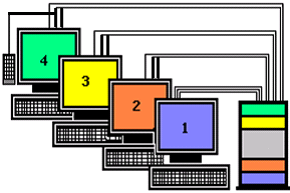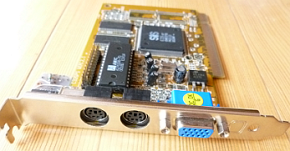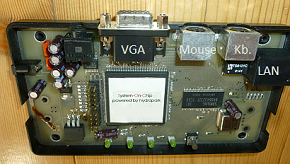History
In 1988, Klaus Maier established his first company KaMai Computersysteme, a Software company. The company invented and developed a “NETBIOS” compatible Local-Area-Network (LAN) for MS-DOS and 3.1 Windows PCs, called “NetMaker”.
In the 1990’s Intel and AMD offered faster and more powerful x86 CPUs, the CPU’s processing power was never fully utilized. So, Klaus had a vision about how to access those CPU’s and also how to multiply the , Windows operating systems and the PCs ‘input’ and ‘output’ interfaces to enable multiple users on a single PC.
With his software he invented the worldwide first “Direct Video Drive Terminal-Server”, based on MS-DOS and later on MS-Windows 3.1. his Hydrapark company worked for many years diligent to support the latest Windows technologies such as Windows 95, Windows 98, Windows ME, Windows XP, the first 32-bit operating system, Windows 2000 and Windows XP.
Unfortunately at that time, every standard PC was designed for just one user so Klaus created his first Multi-User hardware, based on a proprietary ISA 16-bit slot card which had its own graphics chip as well as a keyboards and mouse controller. Over the years the company offered several different modular “Multi-Input” hardware devices which allowed 1 – 5 additional users per card. The solution was advertised as: “One PC – up to 6 simultaneous Users!”
By 1997, most computers were supplied with two USB 1.1 ports so Klaus replaced his expensive ISA-slot cards and developed a new USB driver which assigned any user session its own USB mouse and keyboard and also allowed the ability to have multiple input devices attached. This was a revelation and meant that the cost of ‘additional’ hardware could be reduced significantly. Taiwanese PC accessory giant “ATEN” and US-based PC accessory supplier “iOGEAR” licensed the software and bundled their own USB-devices selling their solutions into the US and worldwide retail markets.
Klaus’s creativity to find a new solutions did not stop at merely modifying off the shelf PCI-video cards. He used the ‘so called’ DDC protocol, which had only been used up until this time during the startup of Windows to detect the correct monitor. With his team, they modified the protocol stack and used this protocol to attach another PS/2 mouse and keyboard.
These USB based products proved very successful, so much so that many cloners from Asia illegally copied the Hydrapark products. As a result, Klaus has had to reinvent the hardware and with his Russian team developed a new SoC (System-on-Chip) one processor Terminal. This was based on the Alteras Cyclone FPGA chip and hydrapark had produced the first worldwide “Thin Client” terminal based on only one programmable FPGA-chip. The first product emulated a standard VGA output, modern PS/2 keyboard and PS/2 mouse, stereo sound for head-phones or speakers, plus a microphone plug-in.
In 2000, the first institutional Investor Capital Stage (Hamburg/Germany) invested in Hydrapark GmbH which enabled them to hire professional sales teams in order to help them to sell the solution worldwide. In addition, further complementary applications, such as a classroom management solution for schools and universities (later renamed to: NConrol) were developed. Over the time Hydrapark improved the technology with its own USB-core for these programmable Altera processors.



